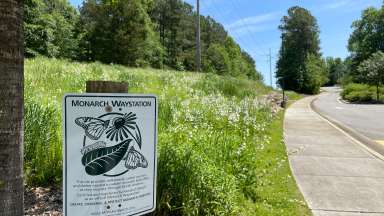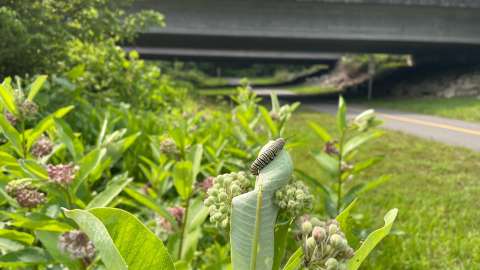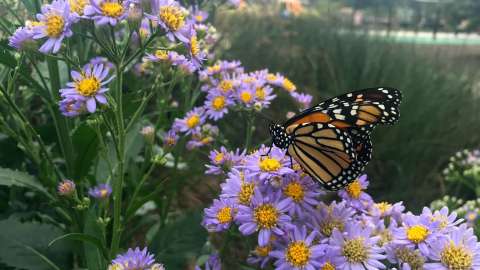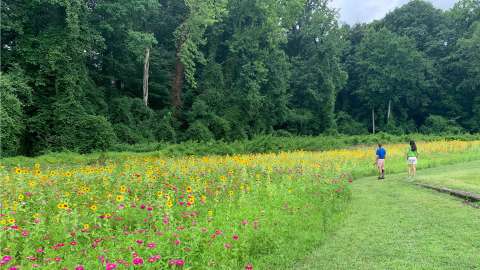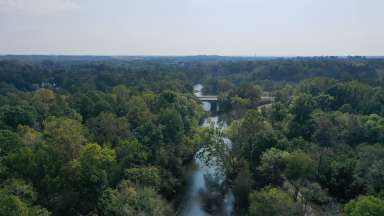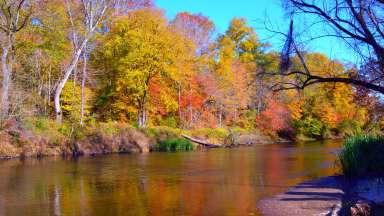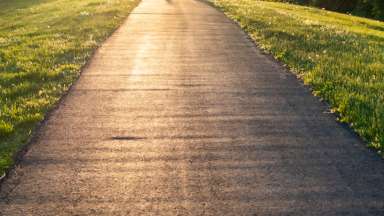Jump To:
What are invertebrates?
95% of all animals on this planet are invertebrates.
According to the great biodiversity scientist E.O. Wilson, invertebrates, the little bugs you find under leaves and visiting flowers, “run the world (1987).” These creatures stitch our planet together, which makes conservation of the utmost importance as their populations continue to decline.
Why is invertebrate conservation important?
Insect populations are declining at 2% per year. If we were to lose all invertebrates, humans and all the other vertebrate species would perish in a matter of months, followed by flowering plants, which would lead to mass extinction and set life back on this planet to a state of a billion years ago, composed primarily of bacteria, algae, and a few other very simple multicellular plants. Insects are the food for all fish and all birds.
Modern land management practices across many sectors are not good for invertebrates. Farming, landscape maintenance, and human development are contributing to a decline in invertebrates worldwide due to increased habitat destruction and fragmentation and increased pesticide use. Habitat loss and climate change are the greatest threats to biodiversity worldwide.
Ways to Take Action
Invertebrate conservation is only possible with the preservation of ecosystems and their structure, function, and processes.
- Preserve Existing Habitats
- Link Habitats Together
- Create New Habitat
- Get Involved!
Preserve and Manage Existing Habitats
- Wake County Land Cover Analysis and Tree Canopy Assessment (2022) found that between 2010-2020 Wake County lost 11,122 acres of tree canopy. That’s approximately the size of two Umstead Parks in 10 years!
- The Urban Forest of Raleigh is extremely important to the conservation of invertebrates.
- A single mature oak tree supports more species than any other.
- The City of Raleigh manages its urban forest through many means:
- Urban Forestry, including street trees and tree conservation areas
- Parks and Greenways comprise over 10,000 acres of land
- Invasive species management
Link Habitats Together
- According to well-documented Species Area Relationships, larger contiguous habitats support more species than smaller, more fragmented habitats.
- Developers can utilize mechanisms available to them in the Unified Development Ordinance (UDO), such as conservation development, which preserves larger amounts of contiguous greenspace in exchange for smaller lot sizes and higher densities.
- Greenways master planning aims to connect parks and greenways into contiguous natural areas.
Create New Habitat
Start by providing the following:
- Food
- Provide flowering plants year-round.
- Provide hostplants for imperiled species, like the monarch butterfly, that depend upon milkweed for survival.
- Shelter
- Adjusting your landscape maintenance practices can have a significant effect on insect populations. For example, you can leave the leaves on plants – leaves provide habitat for many overwintering populations of insect.
- When you cut back your perennials and grass, timing and height are important. Delay your cutback to spring instead of fall, and when you do cut them back, cut them no lower than 8” to provide a critical nesting habitat for bees.
- Protection
- Invasive species removal
- Pesticides
